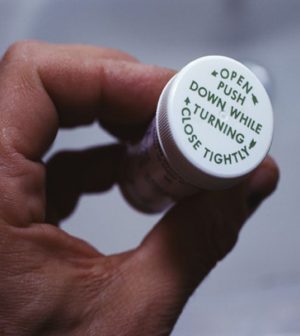- Navigating Your Midlife Crisis: Embracing New Possibilities
- City Raccoons Showing Signs of Domestication
- Mapping the Exposome: Science Broadens Focus to Environmental Disease Triggers
- One Week Less on Social Media Linked to Better Mental Health
- Your Brain Changes in Stages as You Age, Study Finds
- Some Suicide Victims Show No Typical Warning Signs, Study Finds
- ByHeart Formula Faces Lawsuits After Babies Sickened With Botulism
- Switch to Vegan Diet Could Cut Your Greenhouse Gas Emissions in Half
- Regular Bedtime Does Wonders for Blood Pressure
- Dining Alone Could Mean Worse Nutrition for Seniors
Statins May Lower Risk of Deadly ‘Bleeding’ Strokes

Statins may do more than help your heart: New research shows the cholesterol-lowering drugs may also lower your risk for a bleeding stroke.
An intracerebral hemorrhage, which involves bleeding in the brain, comprises about 15% to 30% of strokes, according to the American Association of Neurological Surgeons. It is also the most deadly. With this type of stroke, arteries or veins rupture, and the bleeding itself can damage brain tissue. The extra blood in the brain may also increase pressure within the skull to a point that further harms the brain.
“While statins have been shown to reduce the risk of stroke from blood clots, there has been conflicting research on whether statin use increases or decreases the risk of a person having a first intracerebral hemorrhage,” said study author Dr. David Gaist, of the University of Southern Denmark in Odense.
“For our study, we looked at the lobe and non-lobe areas of the brain, to see if location was a factor for statin use and the risk of a first intracerebral hemorrhage,” Gaist said. “We found that those who used a statin had a lower risk of this type of bleeding stroke in both areas of the brain. The risk was even lower with long-term statin use.”
The researchers used health records in Denmark, identifying 989 people who had an intracerebral hemorrhage in the lobe area of the brain.
The lobe area includes most of the cerebrum, such as the frontal, parietal, temporal and occipital lobes. The non-lobe area includes the basal ganglia, thalamus, cerebellum and brainstem.
People included in the study had an average age of 76. Researchers compared them to 39,500 people who did not have this type of stroke and were similar in age, sex and other factors.
The researchers also looked at 1,175 people with an average age of 75 who had an intracerebral hemorrhage in the non-lobe parts of the brain, comparing them to more than 46,000 people who did not have this type of stroke.
Statin use was determined using prescription data.
After adjusting for factors like high blood pressure, diabetes and alcohol use, the researchers found that people taking statins had a 17% lower risk of having a stroke in the lobe areas of the brain. They had a 16% lower risk of stroke in the non-lobe areas of the brain.
Lower risk of stroke in both areas of the brain was associated with longer statin use. People had a 33% lower risk of having a stroke in the lobe area of the brain and a 38% lower risk of stroke in the non-lobe area of the brain when using statins for five years.
The findings were published online Dec. 7 in the journal Neurology. The study was supported by Novo Nordisk Foundation.
“It’s reassuring news for people taking statins that these medications seem to reduce the risk of bleeding stroke, as well as the risk of stroke from blood clots,” Gaist added in a journal news release. “However, our research was done in only the Danish population, which is primarily people of European ancestry. More research should be conducted in other populations.”
More information
The American Association of Neurological Surgeons has more on intracerebral hemorrhage.
SOURCE: American Academy of Neurology, news release, Dec. 7, 2022
Source: HealthDay
Copyright © 2025 HealthDay. All rights reserved.










